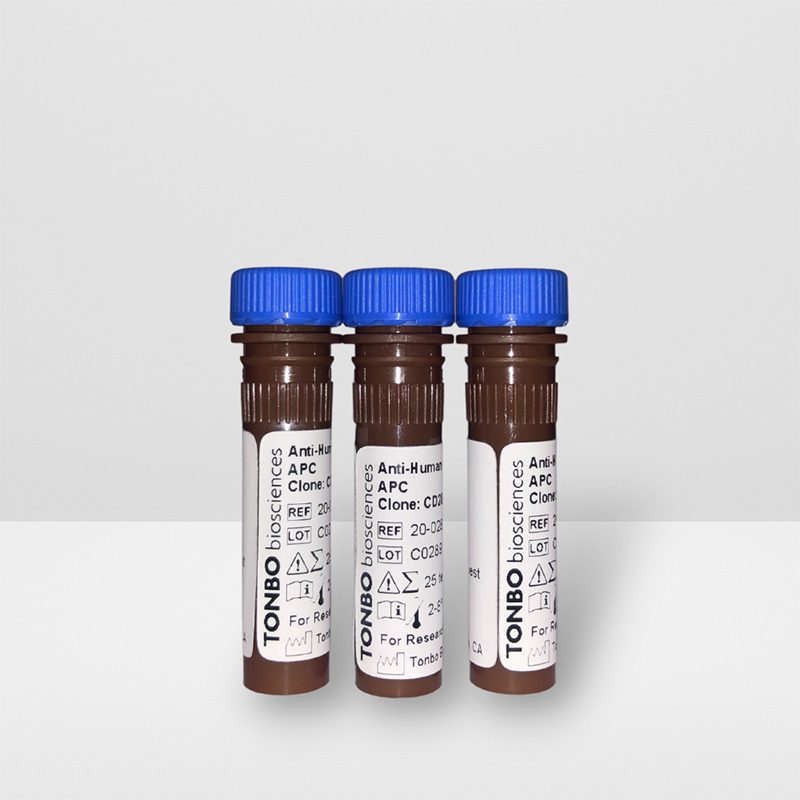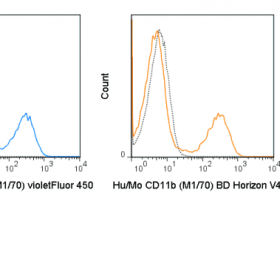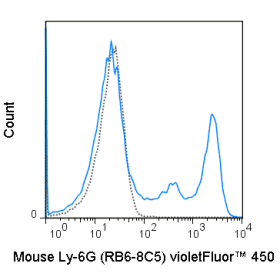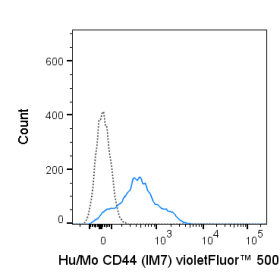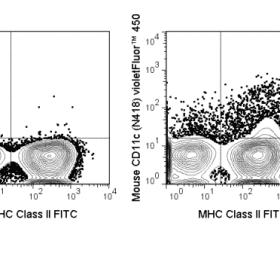| Cat No. | Size | Price |
|---|---|---|
| 20-0037-T025 | 25 tests | $25.00 |
| 20-0037-T100 | 100 tests | $64.00 |
Description
The OKT3 antibody is specific for human CD3e, also known as CD3 epsilon, a 20 kDa subunit of the T cell receptor complex along with CD3 gamma and CD3 delta. These integral membrane protein chains assemble with additional chains of the T cell receptor (TCR), as well as CD3 zeta chain, to form the T cell receptor – CD3 complex. Together with co-receptors CD4 or CD8, the complex serves to recognize antigens bound to MHC molecules on antigen-presenting cells. These interactions promote T cell receptor signaling (T cell activation), inducing a number of cellular responses including proliferation, differentiation, production of cytokines or activation-induced cell death. CD3 is differentially expressed during thymocyte-to-T cell development and on all mature T cells.
The OKT3 antibody is a widely used phenotypic marker for human T cells. In addition, as the CD3e subunit of the TCR complex contains intracellular signaling domains, binding of OKT3 antibody to CD3e can induce cell activation. A recent publication of the crystal structure of a CD3e-mitogenic antibody complex provides further insight as to the action of commonly used agonist antibodies, as well as specific epitope-binding data for the widely used human CD3 antibodies OKT3 and UCHT1 (Fernandes, R.A. et al. 2012. J. Biol. Chem. 287: 13324-13335). OKT3 has also been shown to be cross-reactive with Chimpanzee CD3 and has been used for in vitro activation of T cells in this species. Please choose the appropriate format for each application.
Product Details
| Name | APC Anti-Human CD3 (OKT3) |
|---|---|
| Cat. No. | 20-0037 |
| Alternative Names | Leu-4, T3 |
| Gene ID | 916 |
| Clone | OKT3 |
| Isotype | Mouse IgG2a, κκ |
| Reactivity | Human |
| Cross Reactivity | Chimpanzee |
| Format | APC |
| Application | Flow Cytometry |
| Citations* | Haga-Friedman A, Horovitz-Fried M, and Cohen CJ. Jun 2012. J. Immunol. 188:5538-5546. (in vitro activation)
Bikker A, Moret FM, Kruize AA, Bijlsma JWJ, Lafeber FPJG, and van Roon JAG. Jun 2012. Rheumatology 51:996-1005 (in vitro activation) Bagnara D, Kaufman MS, Calissano C, et al. 2011. Blood. 117: 5463-5472. (in vivo depletion) Nguyen V, Cao L, Lin JT, Hung N, Ritz A, Yu K, Jianu R, Ulin SP, Raphael BJ, Laidlaw DH, Brossay L, and Salomon AR. 2009. Mol. Cell. Proeomics. 8: 2418-2431. (in vitro activation) Bibollet-Ruche F, McKinney BA, Duverger A, Wagner FH, Ansari AA, and Kutsch O. 2008. J. Virol. 82(20): 10271-10278. (in vitro activation – Chimpanzee) Roura-Mir C, Catalfamo M, Cheng TY, Marqusee E, Besra GS, Jaraquemada D, and Moody DB. 2005. J. Immunol. 174:3773-3780 (Immunohistochemistry – Acetone fixed frozen sections) Sato Y, Mukai K, Watanabe S, Goto M, and Shimosato Y. 1986. Am. J. Pathol. 125(3):431-435. (Immunohistochemistry – Paraffin embedded sections) |
Application Key:FC = Flow Cytometry; FA = Functional Assays; ELISA = Enzyme-Linked Immunosorbent Assay; ICC = Immunocytochemistry; IF = Immunofluorescence Microscopy; IHC = Immunohistochemistry; IHC-F = Immunohistochemistry, Frozen Tissue; IHC-P = Immunohistochemistry, Paraffin-Embedded Tissue; IP = Immunoprecipitation; WB = Western Blot; EM = Electron Microscopy
*Tonbo Biosciences tests all antibodies by flow cytometry. Citations are provided as a resource for additional applications that have not been validated by Tonbo Biosciences. Please choose the appropriate format for each application and consult the Materials and Methods section for additional details about the use of any product in these publications.
[accordions]
[accordion title=”Protocols”]Technical Date Sheet[/accordion]


